Redwood giant: a monograph explores the life and work of sculptor JB Blunk
The daughter of late American sculptor JB Blunk has compiled an extensive and intimate monograph of her father's acclaimed life, work and home

For the last six years, Mariah Nielson, daughter of late American artist JB Blunk has been compiling the first comprehensive monograph of her father’s life and work. Designed by Kajsa Stahl of London-based design studio, Åbäke, the book comprises unseen images from JB Blunk’s archive – those he and his friends took from the 1950s-1990s – interspersed with newly commissioned photographs of his work and home.
For more than forty years, the prolific sculptor lived in the house he built for his family, a rural redwood idyll on an acre of land in Inverness, California (W*154), where several prominent designers, including Max Lamb and Martino Gamper, have since taken up residencies. ‘My father made everything in the house from the furniture to the ceramic tableware,’ says Nielson.

#2 Arch, 1976, Redwood. ©JB Blunk Collection
Blunk spent most of his days immersed in his on-site studio, accompanied by a soundtrack of Leonard Cohen and Willie Nelson and had a lifelong friendship with painter and member of the Paris surrealist group, Gordon Onslow Ford. ‘A classic JB Blunk adage was “my time is precious”. He worked hard and was very protective of his time in the studio but he also took breaks for tea every day (4pm) and was an attentive and loving partner and father. It was his determination to create that I remember so clearly,’ says Nielson.
His time living in Bizen, Japan in the 1950s proved formative and he became the first American to apprentice in the country's ancient unglazed ceramic tradition. In woodcarvings that celebrated the material’s inherent qualities, jewellery, painting, bronze sculptures and ceramics, smooth, placid lines are often punctuated by rhythmic, rugged motifs where form and function become almost indistinct. The book traces Blunk’s fluid practice, charged with anthropology, mythology, science fiction and poetry anchored by an innate sense of curiosity and affinity with the natural world.

Penis Stool #1, c. 1975, Redwood.
‘There was a time when the eccentricities of our home (penis stools and carved cypress wood sinks) were embarrassments,’ Nielson recalls. ‘But by my early 20s I began to appreciate what my father had created and now it’s something I’m enormously proud of!’

Blunk’s first wife Nancy Waite building the couple’s California home in 1959, in which they made every element, from the furniture to the tableware. ©JB Blunk Collection

Black Rising Moon, 1970 Acrylic on paper.
This is an extended version of an article that originally featured in the Summer 2020 issue of Wallpaper* (W*255) – on newsstands now and available for free download here
INFORMATION
JB Blunk, $55. jbblunk.com; dentdeleone.com
An exhibition of JB Blunk's sculptures and ceramics will open at Kasmin Gallery, New York this autumn. kasmingallery.com
Wallpaper* Newsletter
Receive our daily digest of inspiration, escapism and design stories from around the world direct to your inbox.
Harriet Lloyd-Smith was the Arts Editor of Wallpaper*, responsible for the art pages across digital and print, including profiles, exhibition reviews, and contemporary art collaborations. She started at Wallpaper* in 2017 and has written for leading contemporary art publications, auction houses and arts charities, and lectured on review writing and art journalism. When she’s not writing about art, she’s making her own.
-
 RIBA House of the Year 2024: browse the shortlist and pick your favourite
RIBA House of the Year 2024: browse the shortlist and pick your favouriteThe RIBA House of the Year 2024 shortlist is out, celebrating homes across the UK: it's time to place your bets. Which will win the top gong?
By Ellie Stathaki Published
-
 The Nothing Phone (2a) Plus Community Edition taps into the brand's creative followers
The Nothing Phone (2a) Plus Community Edition taps into the brand's creative followersThe unconventional features of Nothing Phone (2a)’s new limited edition come from a community-driven project to reshape the style and ethos of the smartphone
By Jonathan Bell Published
-
 What is the sound of Stone Island? A new musical project helps you find out
What is the sound of Stone Island? A new musical project helps you find outStone Island Sound is a new, evolving music project from the Italian label, seeing contributions from John Glacier, Yaeji and more across playlists and live performances
By Jack Moss Published
-
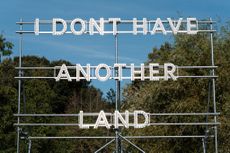 Frieze Sculpture takes over Regent’s Park
Frieze Sculpture takes over Regent’s ParkTwenty-two international artists turn the English gardens into a dream-like landscape and remind us of our inextricable connection to the natural world
By Smilian Cibic Published
-
 ‘Gas Tank City’, a new monograph by Andrew Holmes, is a photorealist eye on the American West
‘Gas Tank City’, a new monograph by Andrew Holmes, is a photorealist eye on the American West‘Gas Tank City’ chronicles the artist’s journey across truck-stop America, creating meticulous drawings of fleeting moments
By Jonathan Bell Published
-
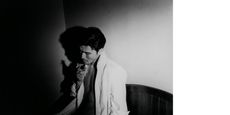 'I’m So Happy You Are Here': discover the work of Japanese women photographers
'I’m So Happy You Are Here': discover the work of Japanese women photographersSubtitled ‘Japanese Women Photographers from the 1950s to Now’, this new monograph from Aperture is a fascinating insight into a critically overlooked body of work
By Jonathan Bell Published
-
 Intimacy, violence and the uncanny: Joanna Piotrowska in Philadelphia
Intimacy, violence and the uncanny: Joanna Piotrowska in PhiladelphiaArtist and photographer Joanna Piotrowska stages surreal scenes at the Institute of Contemporary Art at the University of Pennsylvania
By Hannah Silver Published
-
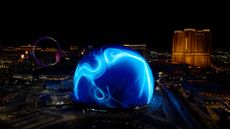 First look: Sphere’s new exterior artwork draws on a need for human connection
First look: Sphere’s new exterior artwork draws on a need for human connectionWallpaper* talks to Tom Hingston about his latest large-scale project – designing for the Exosphere
By Charlotte Gunn Published
-
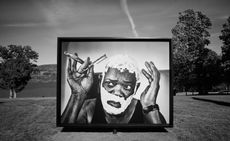 Marc Hom reframes traditional portraiture in Cooperstown, NY
Marc Hom reframes traditional portraiture in Cooperstown, NY‘Marc Hom: Re-Framed’ has taken over the grounds of the Fenimore Art Museum, Cooperstown, planting Samuel L Jackson, Gwyneth Paltrow and more ‘personalities of the world’ into the landscape
By Hannah Hutchings-Georgiou Published
-
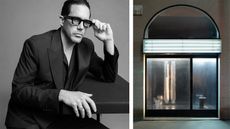 Alexander May, founder of LA studio Sized, on the joys of creative polymathy
Alexander May, founder of LA studio Sized, on the joys of creative polymathyCreative director Alexander May tells us of the multidisciplinary approach that drives his LA studio Sized and its offspring, a 5,000 sq ft event space and an exhibition series
By Hannah Silver Published
-
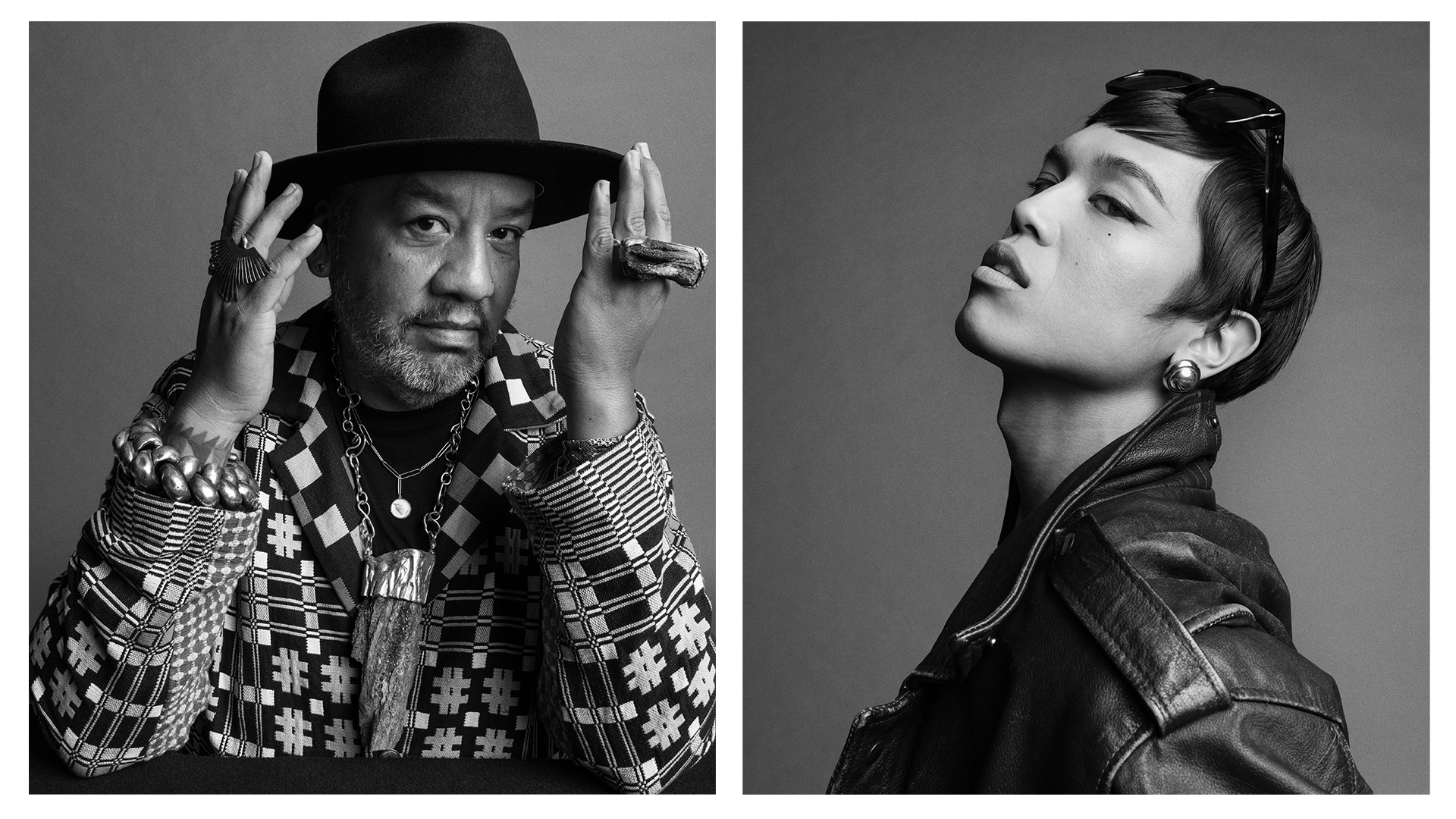 50 of America’s top creatives, photographed by Inez & Vinoodh
50 of America’s top creatives, photographed by Inez & VinoodhPhotographed exclusively for Wallpaper* by Inez & Vinoodh, we present a portfolio of 50 creatives driving the current discourse on American culture and its dynamic evolution
By Dan Howarth Published